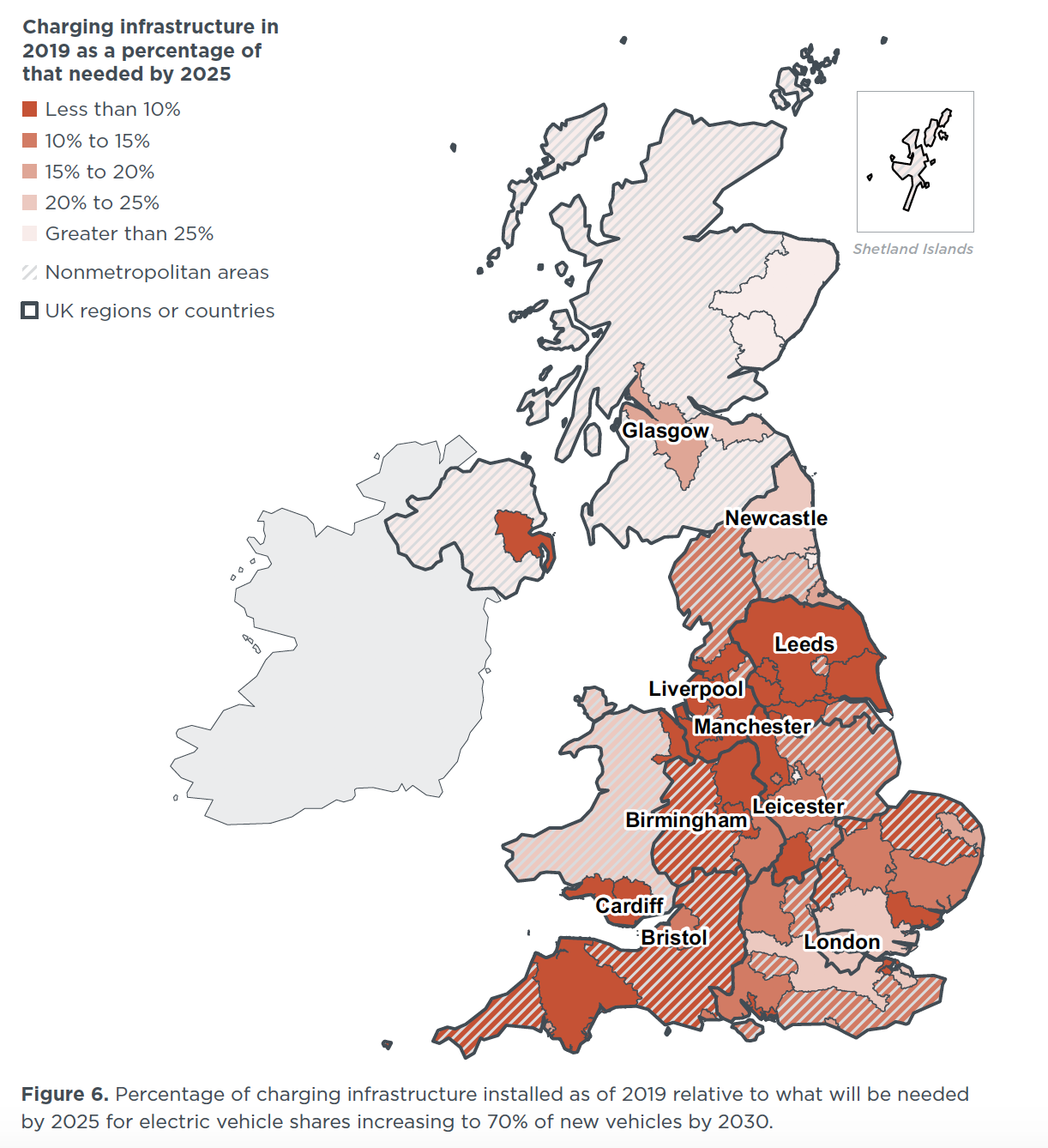The United Kingdom (UK) has seen rapid growth in the electrification of its passenger car market, and the trend is expected to continue. Plug-in electric models represented 3% of new passenger car registrations in 2019, and that share has approximately tripled in the first half of 2020. The UK has set a goal of 50%–70% of the new car market being ultra-low emission by 2030 to achieve climate, air quality, and energy security ambitions. The UK government also is considering a 100% zero-emission new car sales goal for 2035 and Scotland aims to fully phase out petrol and diesel car or van purchases by 2032.
This paper assesses the electric vehicle charging infrastructure necessary to power electric passenger cars in the UK through 2030. To inform national and local-level charging infrastructure policy, as well as help steer public and private investments, this report quantifies the amount of public, workplace, and rapid charging needed across UK metropolitan and nonmetropolitan areas. The charging assessment reflects best-available market and charging behavior data, expected increases in electric range and charging speed, and the increased need for public charging as the market broadens beyond early adopters.
Although this research is focused on how much publicly accessible and workplace electric vehicle charging infrastructure is needed, it must be emphasized that home charging accounts for more than 90% of the number of chargers and 60% of all the charging energy needed, and this remains the case through 2030. Beyond the at-home charging, increased public and workplace charging is critical for a comprehensive and convenient charging ecosystem for a growing electric vehicle fleet. We offer three main conclusions.
The UK’s ambitious electric vehicle goals will need equally ambitious charging goals. To support 5.2 to 6.7 million cumulative electric vehicles and a 50%–70% electric share of new passenger cars by 2030, an increasingly comprehensive charging network will be needed. We estimate that 341,000 to 430,000 workplace, public, and fast chargers and an approximate 30% annual growth rate in the UK’s charging infrastructure will be needed to keep pace with the UK’s 2030 electric vehicle growth goals. The London area and Scotland have had relatively strong charger deployment through 2019, putting each on a path toward their 2030 charging needs.
Fast charging deployment has shown strong growth. Our findings indicate that fast charging installed at the end of 2019 represented at least 40% of the UK’s 2025 needs and about 20% of its 2030 needs. Scotland has built an especially robust fast charging network through 2019 and sets a leading example for other regions. These developments suggest fast charging infrastructure will need steady deployment of about 18% per year through 2030.
More vehicles can be supported per publicly accessible charger in future years. The ratio of electric vehicles (including all-electric and plug-in hybrid) per normal speed charger rises from 10 in 2019 to 16 in 2030. All-electric battery electric vehicles per fast charger increase from 66 to 300. This is the result of the move to more longer-range electric vehicles, faster charging speeds, and higher utilization rates of chargers. These trends can be expected to provide increasing opportunities for improved business cases for charging providers.
Please click here to view the full press release.
SOURCE: ICCT

